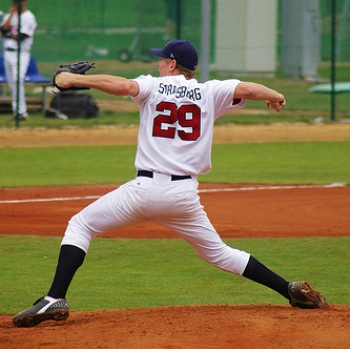quote:
Originally posted by brewers40th:
i love all this talk about mechanics but what about the training regiments they have ballplayer do nowadays. back in the day pitchers would start on 3 days rest and most would throw everyday. nowadays it seems teams try so hard to save player's arms that it actually causes more damage to the ligament and tendons in the arm. the atlanta braves pitchers throw everyday, even the day after a start. this is the best way to remove lactic acid from the tissue and increase repair and reduce injury. icing and resting is not the answer...just a thought
I agree 100%. We tend to baby arms too much nowdays. I am of the opinion that players should throw a lot- everyday during the season and even a lot in the off season. It bothers me when I see kids warm up for a game- here is the typical routine-
Go out and stretch- 5-10 minutes
start tossing back and forth while the coach does last minute changes to the lineup card and bull$$$$'s with the opposing coach,
then, just when players are starting to air out the arm they stop- just like that.
In games, relivers come in cold usually, throw 6 pitches and they apparently think they are ready to go.
Then after 2-3 innings of solid work they come out with arm pain or fatigue and are told by everybody and their dog to go home and use plenty of ice and then don't throw for 3 days.
It's no wonder we have so much problems in todays athletes- they don't condition and train to throw properly. Ibuprofin and ice doesn't answer the call- it isn't the cure all fix. Better coaching needs to happen. Players will listen to a good coach and train harder and condition their arms better. They also need to be taught how to warm up to throw and learn the most important thing- throwing a lot (not pitching) is a good healthy habit for every player on the team.









